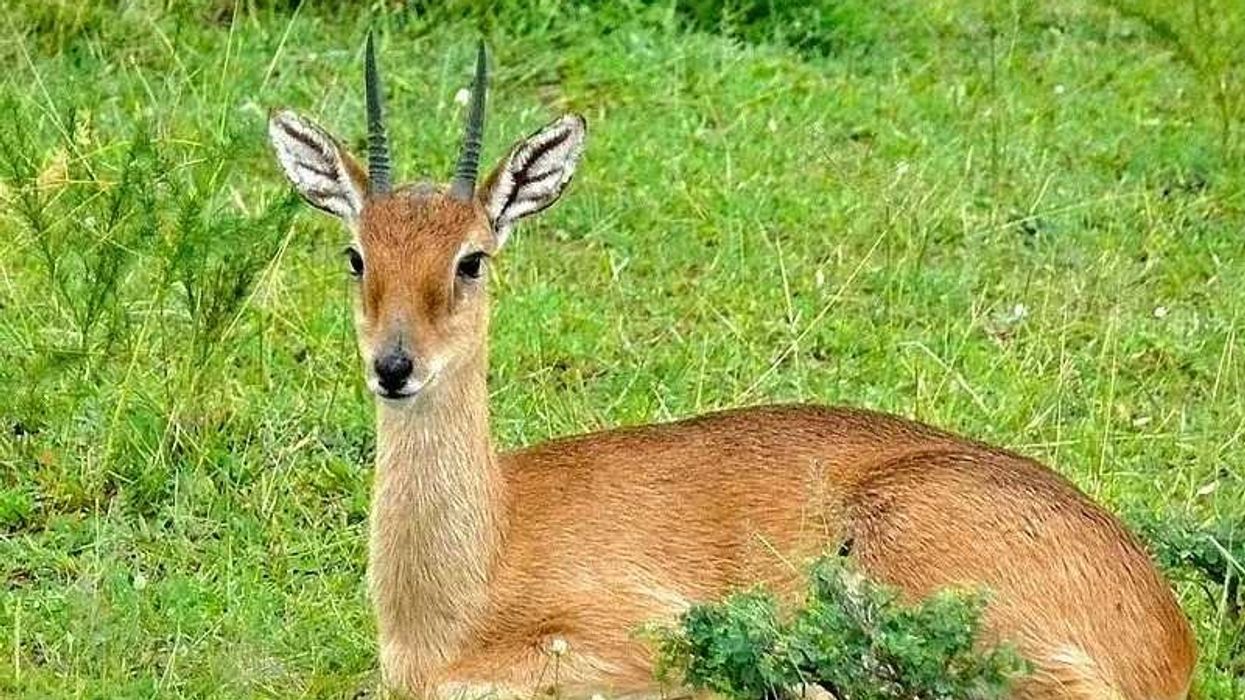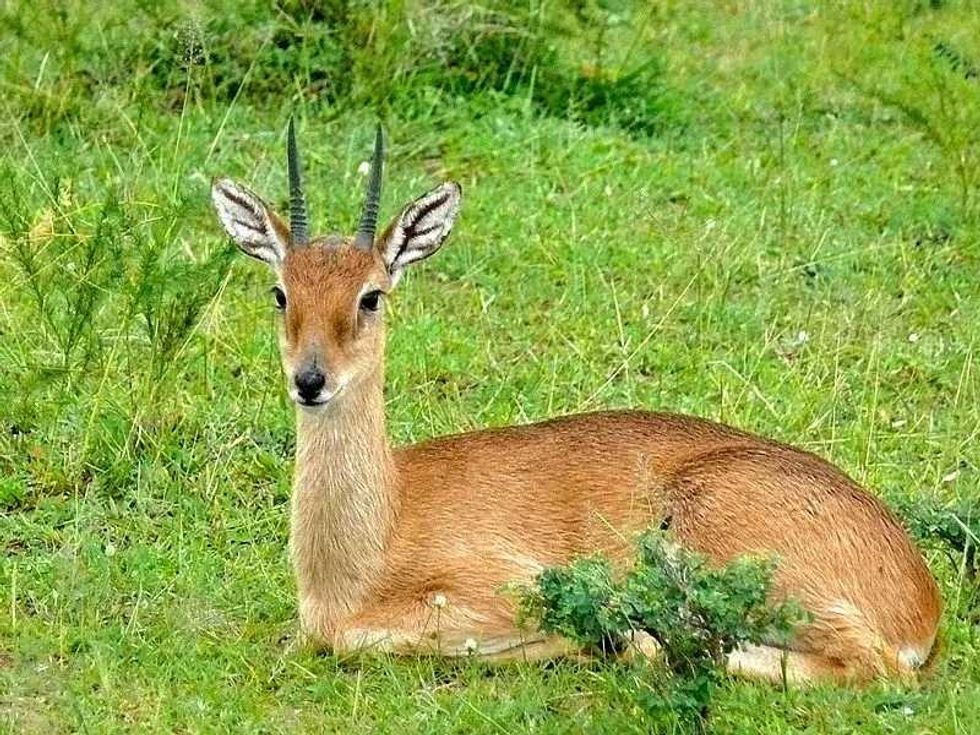The oribi (Ourebia ourebi) is an antelope that is native to Africa. It is scattered in the eastern and southern parts of the continent mostly.
They have a wide range across South Africa, where they visit their territories and mark them for living and breeding. The oribi animal generally is found living in pairs or in a group. They have a simple diet that includes grasses from woodlands and grazing areas as well as nuts, fruits, and leaves.
They have their breeding season in the months from April to December, where they are at their peak of sexual maturity. Regarding the oribi, females attain sexual maturity by the time they reach seven months of age. A male oribi attains sexual maturity by the age of 10-14 months.
A male oribi possesses six scent glands and is known to distribute scents across their territories. This behavior aims to attract females.
If you find the oribi interesting, you might want to know about sheep and takin too.
Oribi Interesting Facts
What type of animal is an oribi?
An oribi is an antelope. It belongs to the family of Bovidae.
What class of animal does an oribi belong to?
The oribi antelope belongs to the Mammalia class of animals. They are territorial antelopes found in scattered parts of Africa.
How many oribis are there in the world?
According to the International Union for Conservation of Nature (IUCN) Red List of Threatened Species, there is an estimated number of 750,000 of these animals present at the moment.
Where does an oribi live?
The oribi (Ourebia ourebi) is mostly found in different countries of the sub-Saharan region of Africa. They are found in a scattered manner in countries like South Africa, Kenya, Zimbabwe, Zambia, and Somalia. They are not found in large numbers but mostly in small groups across these countries.
What is an oribi's habitat?
This species is a resident of sub-Saharan regions of Africa. They are mostly accustomed to woody grasslands and the wetter parts of the savanna region of southern and eastern parts of Africa.
Who does oribi live with?
The oribi is a territory-oriented placental mammal. They are mainly asocial and are monogamous in nature. They are found either in pairs or in a herd. They generally mark their territory when breeding and feeding. They do not live in groups of large numbers and are mostly scattered through the wetter parts of the southern sub-Saharan region of Africa.
How long does an oribi live?
These African antelopes are mainly wild animals by nature. So, in the wild, they have an average lifespan of between eight and 12 years. When they are kept in captivity, their lifespan might extend to 16 years.
How do they reproduce?
The oribi antelope is a placental mammal found in savanna regions. Being monogamous in nature, this animal is mostly seen in pairs or in small groups during the breeding season.
Otherwise, male oribis live mostly in isolation, while young oribis stay with female oribis. These mammals do not have a specific breeding period but mating is at its peak during the rainy season during April.
These mammals reproduce mostly one individual, and in some cases, that might rise to two. Their gestation period generally lasts between six and seven months on average.
What is their conservation status?
According to research by the International Union for Conservation of Nature (IUCN), oribis are listed in the category of Least Concern. Currently, there are 750,000 individuals in Africa. Even though they are listed as a species of Least Concern, they have a decreasing trend in population due to hunting activities by humans.
Oribi Fun Facts
What does an oribi look like?
Oribis are asocial antelopes found in Africa. They are mostly covered in fur, which is brown in color. They have long legs and long necks.
They also have a distinctive pair of horns which are black in color. The underparts of their body are white and the inside of their ears have a slight whitish hue. They have a small and stubby black tail.
They have a coat of fur that is reddish-brown in color. They have small glandular spots near and under the ears on both sides, which look like white patches. The color of this animal depends and varies from location to location.
How cute are they?
Needless to say, these antelopes, with their distinctive ears and small black tail, are extremely cute by appearance. With their prominent brown coat, they are extremely vibrant mammals.
How do they communicate?
Unlike other mammals, the oribi (Ourebia ourebi) has a unique way of communicating with other oribis. They are known to have six scent glands that they use to scatter scent markings in and around their territory.
They do this behavior in order to attract female antelopes for mating. They are not very loud in general but they do produce calls in a short and shrill tone as a sign to alert or warn other members of their group of an approaching danger.
How big is an oribi?
The oribi antelope is a little dwarf member of the antelope family. Even though they are not large by structure, they have an average length of 20–30 in (51–76 cm).
They are three times as big as a royal antelope which is just 9.8 in (25cm) in length. They are, however, much smaller than a spiral-horned antelope, standing at 5.9 ft - 7.8 ft (1.8 m - 2.4 m).
How fast can an oribi run?
An oribi has an average speed of 31 mph (54 kph). This speed not only helps them to run away and survive from their predators, but it also helps in efficiently marking their territories.
How much does an oribi weigh?
The oribi is not huge by structure and has an average weight of 30.8 lb (14 kg).
What are their male and female names of the species?
Males are known as bucks and females of this species are known as a doe.
What would you call a baby oribi?
Similar to all other antelopes, a baby oribi is known as a fawn.
What do they eat?
Being herbivores by nature, this species depends on grazing land and grasses. If there is an unavailability of grasses, these animals are known to feed on leaves, fruits, nuts, foliage, and legumes as well.
Are they poisonous?
There is no information about this species being poisonous in nature. It can be assumed that they are not poisonous.
Would they make a good pet?
They are not considered to be good pets for humans as they thrive in the wild, rather than kept in captivity.
Did you know...
A male oribi has a distinctive pair of horns that it uses not only to defend itself but also to attract females.
For three months after the birth of a baby oribi, it is kept hidden by female oribis.
Why is the oribi endangered?
Unlike the critically endangered saiga antelope, the oribi is not endangered, but the population is decreasing. Habitat loss and poaching are the main threats to this species. Between 1978 to 1998, poaching resulted in a 92% decrease in the oribi population.
How to identify an oribi antelope?
They may look like deer, but they are not. These species have few distinctive features that make it easy to identify them. They have prominent white patches of glands near the ears. Their black tail and sharp horns are also clear ways to identify them.
Here at Kidadl, we have carefully created lots of interesting family-friendly animal facts for everyone to discover! Learn more about some other mammals from these fennec fox facts and musk ox facts pages.
You can even occupy yourself at home by coloring one of our free printable oribi coloring pages.










